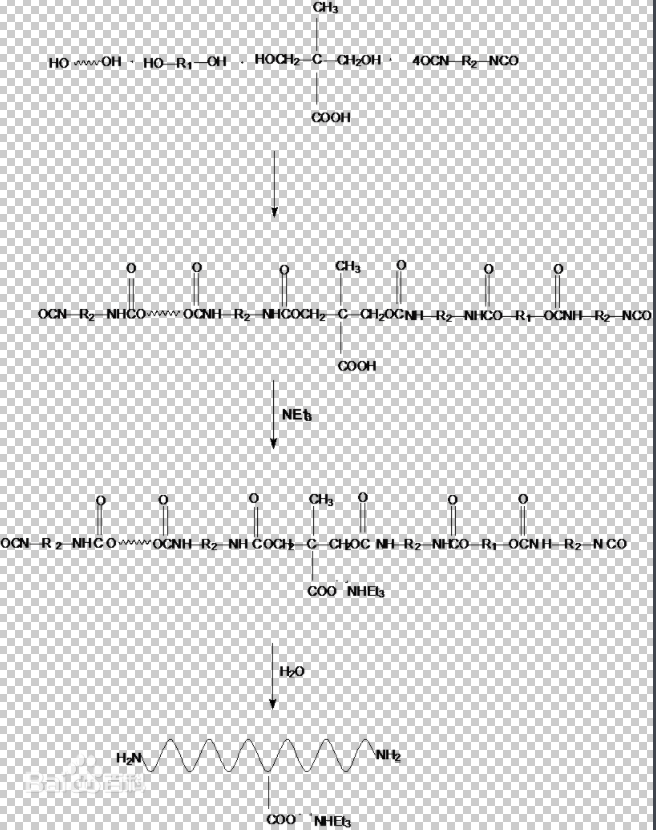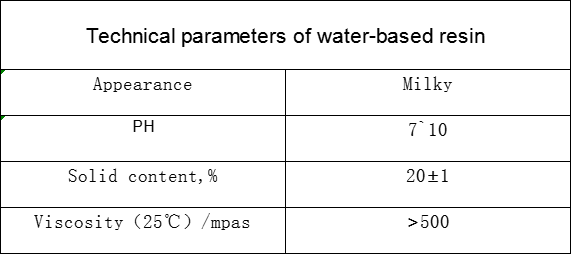Professional industry ceramic supplier, silicon nitride, silicon carbide, aluminum nitride and any other kinds of ceramics.
According to the charge properties of hydrophilic groups (or water-based monomers)
Waterborne polyurethane can be divided into anionic waterborne polyurethane, cationic waterborne polyurethane and nonionic waterborne polyurethane. Among them, the anionic type has the largest output and the most widely used. Anionic waterborne polyurethane can be divided into two categories: carboxylic acid type and sulfonic acid type. In recent years, there have been more and more researches on non-ionic waterborne polyurethanes in macromolecular surfactants and associative thickeners. Cationic waterborne polyurethane has good permeability, antibacterial and anti-mildew properties, and is mainly used as leather finishing agent.
Based on synthetic monomers
Waterborne polyurethanecan be divided into polyether type, polyester type, polycarbonate type and polyether and polyester hybrid type. According to the different diisocyanates selected, waterborne polyurethane can be divided into aromatic, aliphatic, araliphatic and alicyclic, or specifically divided into TDI type, IPDI type, MDI type, and so on. Aromatic waterborne polyurethane has obvious yellowing properties similar to oily polyurethane, and has poor weather resistance, which is a low-end popular product; aliphatic waterborne polyurethane has good color retention and weather resistance, but the price is high, and it is a high-end product; The properties of araliphatic and cycloaliphatic lie between the two.
In the form of product packaging
Waterborne polyurethane can be divided into one-component waterborne polyurethane and two-component waterborne polyurethane.
One-component waterborne polyurethane includes three types: one-component thermoplastic, one-component self-crosslinking and one-component thermosetting. The one-component thermoplastic waterborne polyurethane is linear or simple branch type. It belongs to the first-generation product. It is convenient to use, low in price, and has good storage stability, but the overall performance of the coating film is poor; single-component self-crosslinking, thermal Solid waterborne polyurethane is a new generation product. A self-crosslinking system is formed by introducing silicon crosslinking units or dry oil fatty acid structure. The hydroxyl and amino resin (HMMM) of waterborne polyurethane can form a one-component thermosetting waterborne polyurethane.
Self-crosslinking groups or groups that can react under heating (or room temperature) conditions greatly improve the overall performance of the coating film. Its water resistance, solvent resistance, and abrasion resistance can fully meet the application. This type of product is water-based polyurethane The mainstream of research. Two-component waterborne polyurethane includes two types, one is composed of waterborne polyurethane main agent and crosslinking agent, for example, the carboxyl group on waterborne polyurethane can be crosslinked with polyaziridine compound;
The other is composed of water-based hydroxyl components (which can be water-based acrylic resins, water-based polyesters or water-based polyurethanes) and water-based polyisocyanate curing agents; the two components are mixed during use, and after the water volatilizes, it can react at room temperature (or medium temperature) The reaction of the groups forms a highly cross-linked coating film and improves the overall performance. The latter is the leading product.
Principles of Waterborne Polyurethane Synthesis
Anionic waterborne polyurethane is the most important. The chemical principle of aromatic waterborne polyurethane synthesis can be expressed by the following reaction formula:
Synthetic chemical reaction formula of aromatic waterborne polyurethane
Synthetic chemical reaction formula of aromatic waterborne polyurethane
While adding water to emulsify after neutralization, water also acts as a chain extender. After chain extension, the terminal -NCO group of the macromolecule is converted to -NH2, and further reacts with -NCO, through the urea group (-NH-CO- NH-) to further increase the molecular weight of waterborne polyurethane.
Aliphatic waterborne polyurethane uses aliphatic diisocyanates (such as IPDI, TMXDI) as monomers, and its activity is low. Therefore, its chain extension in water is by adding ethylenediamine, hydrazine or diethylenetriamine (polyethylene Polyamine); this method uses low solvent consumption, no need to remove the solvent, the process is more reliable, and it can realize the true meaning of green process production.

Overview of waterborne polyurethane
Aqueous polyurethane resin refers to polyurethane using water as a dispersion medium. In the 1990s, with the strengthening of people’s awareness of environmental protection and environmental protection laws and regulations, the research and development of environmentally friendly waterborne polyurethanes have received increasing attention. The polyurethane market represents the development direction of coatings and adhesives. Surprisingly, among water-based resins, water-based polyurethane is still a representative of excellent resins, and it is one of the hotspots of modern water-based resin research.
Waterborne polyurethane applications
Leather finishing agent
The basic use of waterborne polyurethane is as leather finishing agent. my country also has large-scale production.
Polyurethane resin is flexible and wear-resistant, and can be used as a coating agent and repair agent for natural leather and artificial leather; water-based polyurethane finishing agent overcomes the weakness of acrylic emulsion finishing agent "hot sticky and cold and brittle", and the treated leather feels soft and slippery It is cool, plump, bright, and has a strong sense of leather, which can greatly improve the quality of leather goods and enhance market competitiveness.
Early waterborne polyurethanes were linear and thermoplastic; in order to improve their strength, hardness, water resistance, and solvent resistance, trifunctional monomers could be introduced to form appropriate branches or an external crosslinking agent could be added.
Waterborne polyurethane coating
Solvent-based polyurethane coatings are a high-end paint variety, and the output has increased rapidly in the 1990s; however, conventional solvent-based polyurethane coatings contain about 40% of organic solvents, so the VOC (volatile organic compounds) of the coatings brings huge pollution to the atmosphere . One of the development directions of coatings in the 21st century is environmentally friendly coatings, that is, low-pollution or non-pollution coatings. Mainly include high-solid coatings, water-based coatings, powder coatings and radiation curing coatings. Among them, water-based paint is the most important category.
Coatings based on water-based polyurethane dispersions have developed rapidly in developed countries. Water-based polyurethane products used in substrates such as wood, metal and plastic have been continuously put on the market, and some of them have entered the Chinese market.
Waterborne polyurethane price
Waterborne polyurethane will vary randomly with the production cost of waterborne polyurethane, transportation cost, international situation, exchange rate and the supply and demand of zinc stearate emulsion. Tanki New Materials Co., Ltd. aims to help various industries and chemical wholesalers find high-quality, low-cost nanomaterials and chemicals by providing a full set of customized services. If you are looking for water-based polyurethane, please feel free to send an inquiry to get the latest price of water-based polyurethane.
Waterborne polyurethane suppliers
As a global supplier of waterborne polyurethane, Tanki New Materials Co., Ltd. has extensive experience in the performance, application and cost-effective manufacturing of advanced engineering materials. The company has successfully developed a series of powder materials (including oxides, carbides, nitrides, single metals, etc.), high-purity targets, functional ceramics and structural devices, and provides OEM services.

